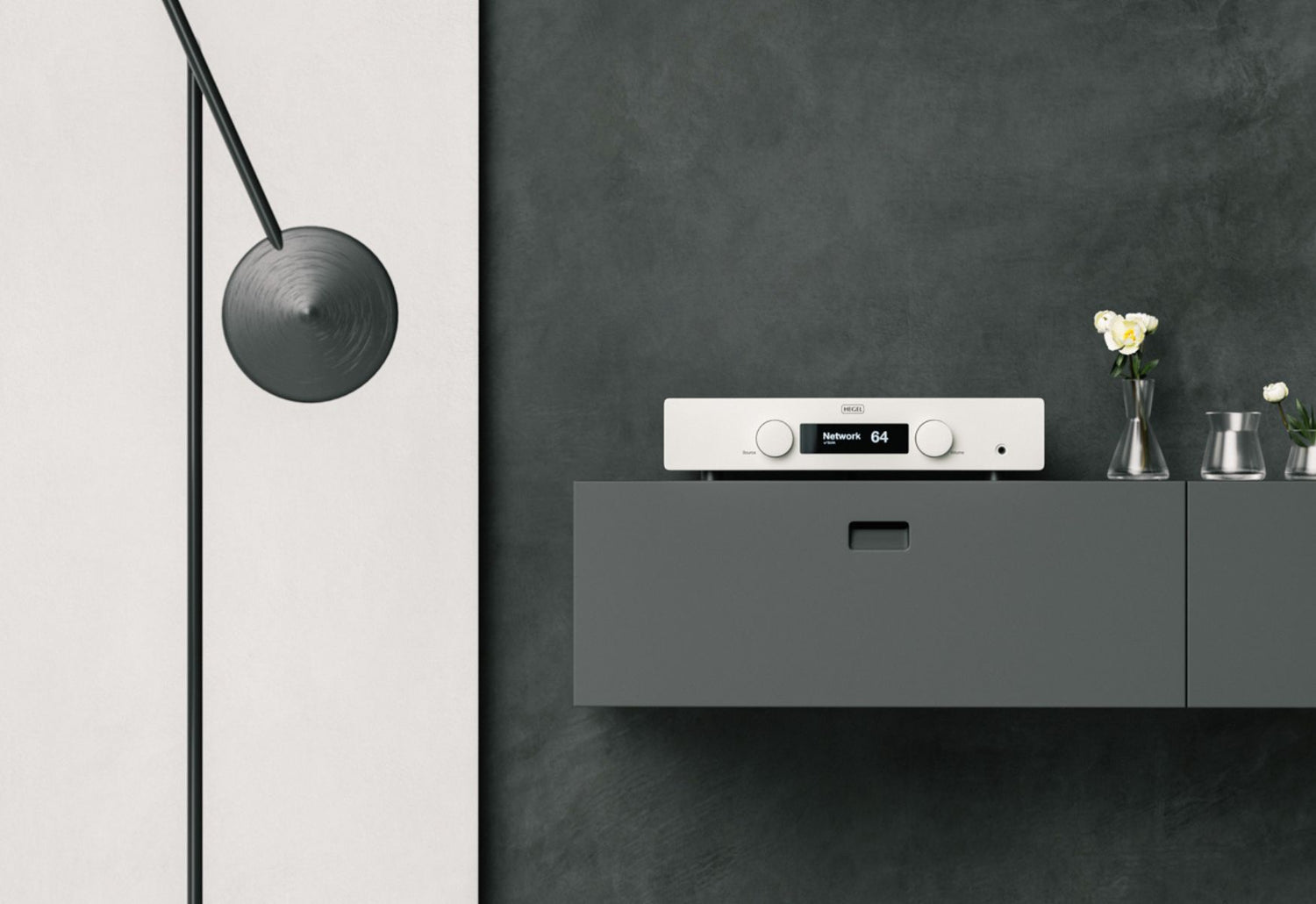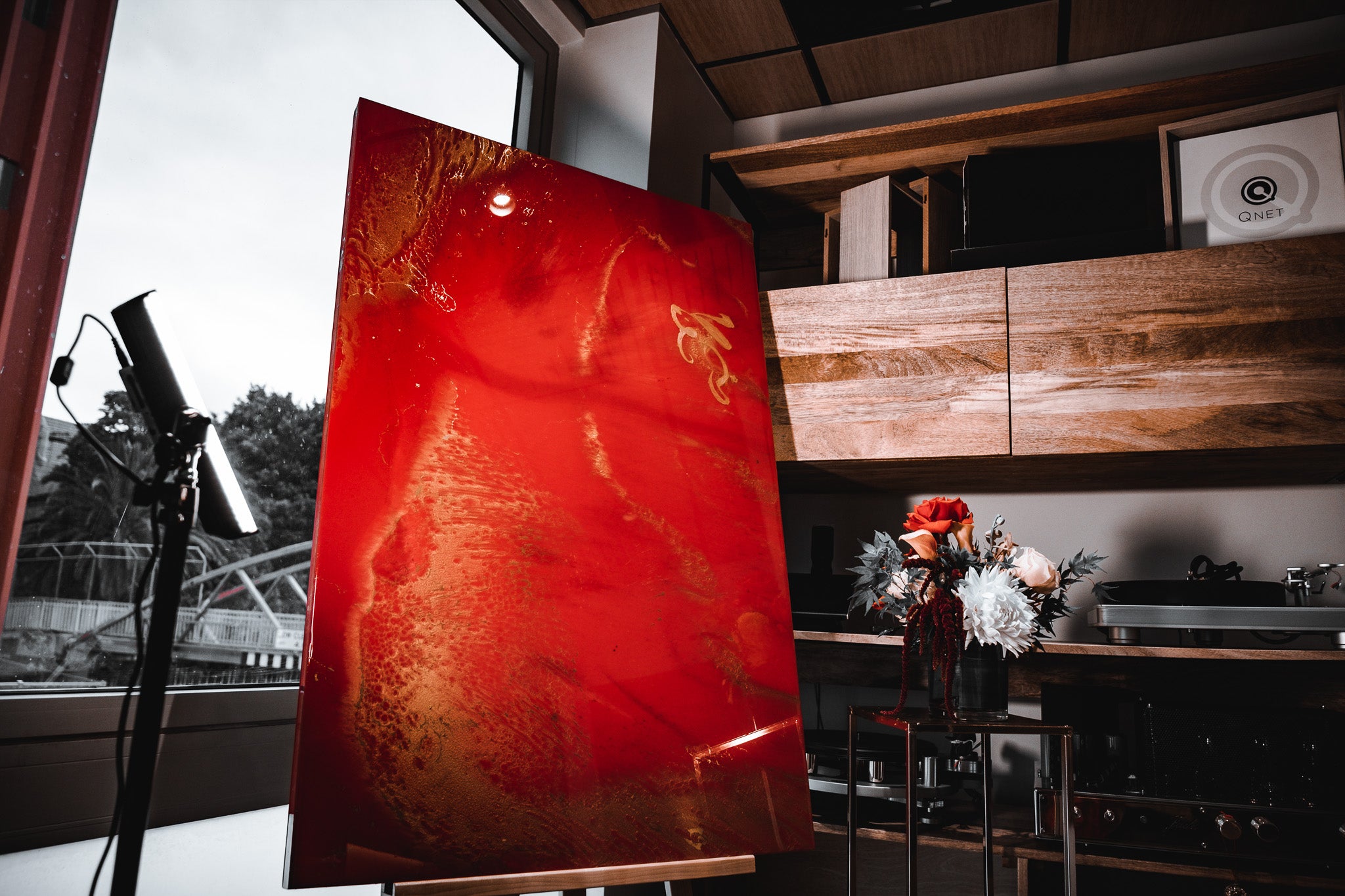Summary
- Damping factor is the ability of an amplifier's ability to control the woofers in your speaker, and is one part of the system damping factor.
- The higher the damping factor, the more neutral the amplifier will sound.
- A high or low damping factor is neither good nor bad, simply a design choice.
With Hegel's range of streaming integrated amplifiers rising in popularity, well known for their high damping factor, a common question we get is "Does Damping factor matter?"
In a word, yes!
Damping factor is an amplifier's ability to control the bass woofers of the speakers connected to it. Typical amplifiers have a damping factor around 100, whereas higher quality amps like the ones from Dan D'agostino or Pass Lab have damping factors of around 500 (depending on the model).
So why have Hegel chosen to engineer in a damping factor of 4000? Well to answer this question, we first need to understand three things.
What is damping factor?
Damping factor is a fancier way of describing an amplifier's impedance output across a frequency spectrum. Most manufacturers will define their damping output at a frequency of 1kHz, and it can vary quite widely from there. Some manufacturers, like Gryphon, have an exceptionally flat damping factor across the whole frequency spectrum, which is ideal.
What effect does a low or a high damping factor have?
An amplifier with a high damping factor is able to better control the bass, resulting in tighter, punchier bass instead of the bass being muddy. It also reduces the amount of error in frequency response between the source and the load, i.e. the amplifier and the speaker. In listening terms, a low damping factor, of around 100-200, results in a scenario where bass hangs around for too long, which makes bass produced by the speaker sound muddy and bloated, reducing the perceived clarity of the system. Of course, your room has a major effect on bass, but we're just talking about the first point of bass reproduction here.
A low damping factor has a tendency to "colour" or "distort" the sound. Note this is not necessarily a "bad" thing - this is something that amplifier manufacturers do on purpose, to characterise the sound that their products make. On the other hand, a high damping factor, normally around 1000-2000, results in tighter, controlled bass, where the woofer starts and stop where the music dictates that it should. From a tonality perspective, a higher damping factor also produces a neutral sound, so that the amplifier doesn't colour the sonic signature, which means you hear more of the character of the speaker.
System Damping Factor
Damping factor of the amplifier and is effect on the system is also heavily impacted by the amount of copper inside your speaker cables. Thin speaker cables result in a lot of error and thus degrades the overall system damping factor - one of the reasons why higher quality manufacturers like Nordost and Transparent Audio put much metal in their cables.
In application
A real life anecdote for you - we installed a set of $200,000 Wilson Audio speakers for one of our clients. It was his first purchase with us, and had an existing system, which consisted of a set of older high end monoblocks from a very well-known manufacturer with a damping factor of 100, and very thin gauge speaker cables. When we got them out of the box, they sounded great, like Wilsons normally do, but they were very bass heavy - much heavier than we expected. Anyway, the client was happy, and we left them to run in at his place. A few months later, the client called in, to let us know that the Wilson's were becoming too bassy. We expected this - as speakers run in, and the drivers become loose, they're going to move more air. To tame the bass problem, we suggested we upgrade his older monoblocks and get him into a new Gryphon power amplifier, and upgrade his speaker cables to something with a lot more copper in them. The result? Tight, controlled bass that is balanced across the whole listening spectrum.
Why does Hegel have 4000?
So then, why did Hegel pick 4000 for their damping factor? Well, this is just our own opinion, but it would seem like they set out to create the most neutral sounding (point 2 above) that will work with the greatest variation of speaker cables and connected speakers. By putting in a damping factor of 2000 or 4000, which does appear on the high side, they have created a neutral sounding amp in and of itself, and an amp that will stay neutral in sonic character, regardless of the quality of the speaker cable and connected speakers.
So effectively, if you want an amplifier that will make your speaker sound more like your speaker, try a Hegel!
Note - as mentioned above, a low or a high damping factor is not necessarily a good or a bad thing. It's simply a tool that amplifier manufacturers can use to create the type of amplifier they desire. Just like choosing how much power, what inputs, what feature sets, whether or not their binding posts are spade or banana - damping factor choice is another aspect of the design process. 2nd Note - when you're doing an A/B comparison between a Hegel and another amp (let's call it AmpBrand), powering a speaker, and you find that you prefer the sound of AmpBrand + Speaker over the sound of Hegel + Speaker, it may not be that you don't like the Hegel amp. Given that the Hegel amps are so sonically neutral, it may be more that what you actually don't like is the sound of the speaker. By connecting AmpBrand to said speaker, you're colouring the sound of the speaker and thus the system.



